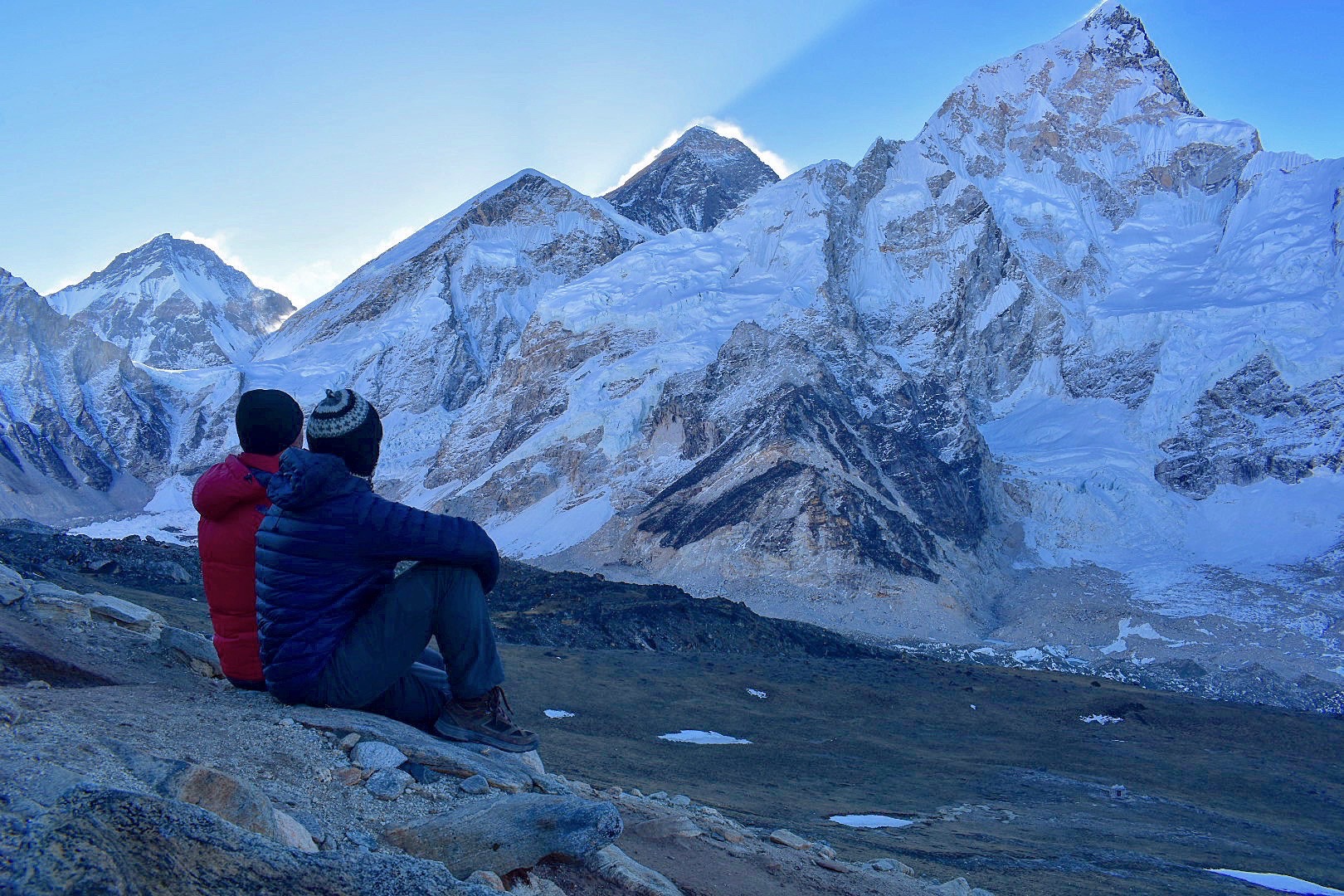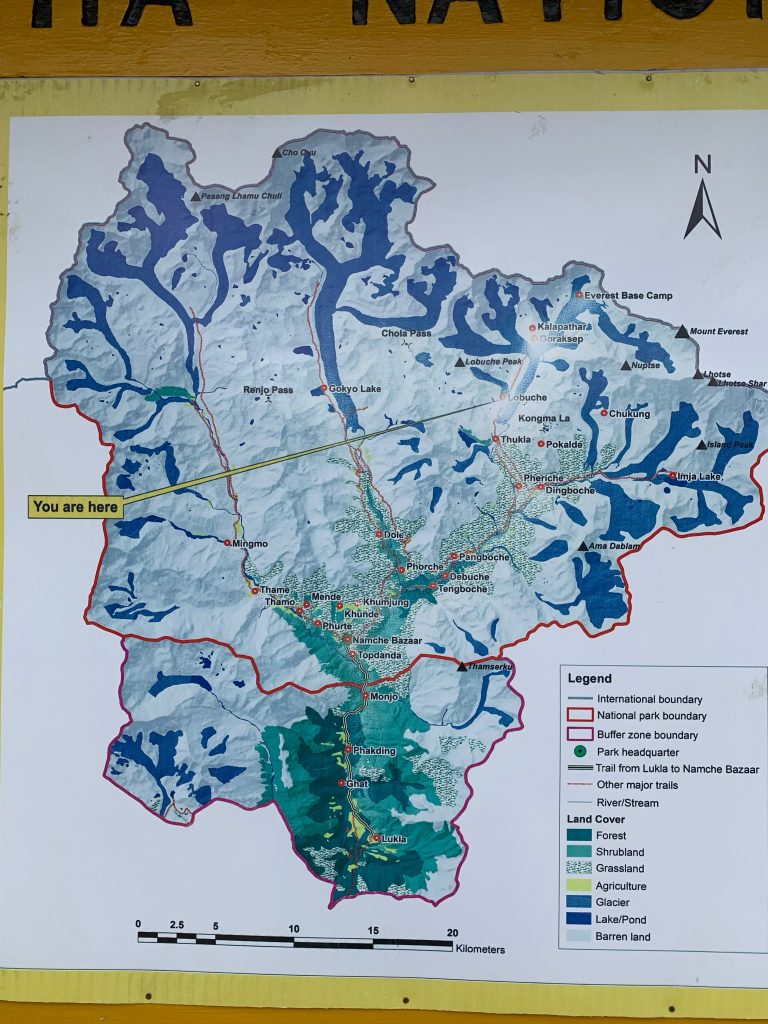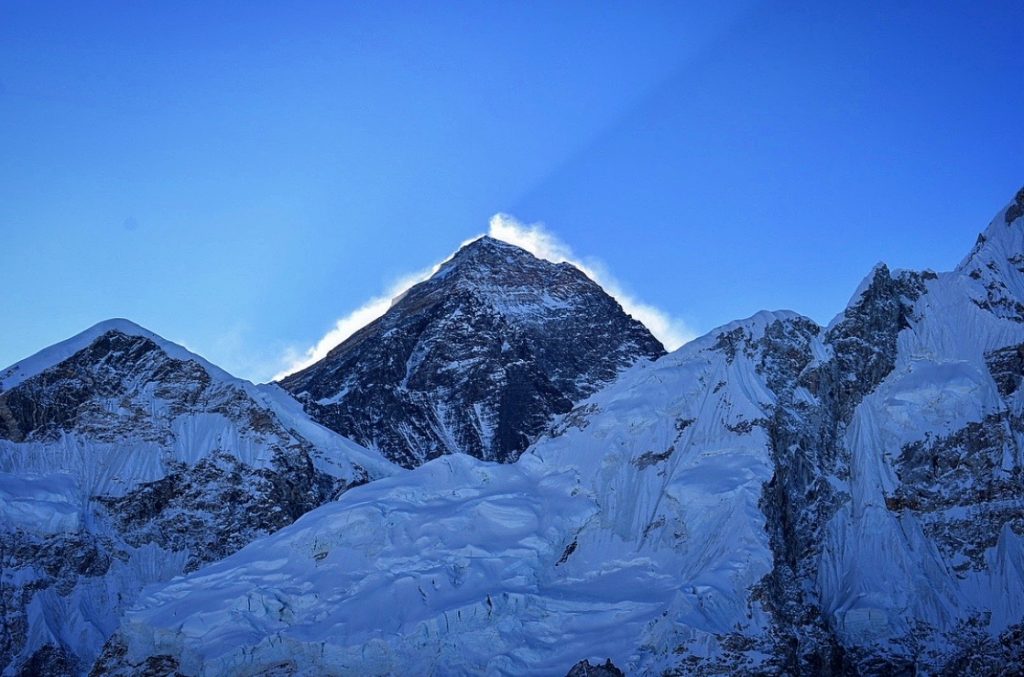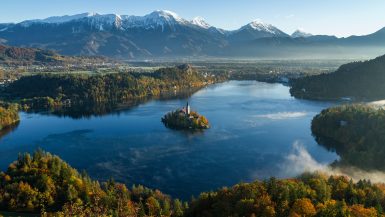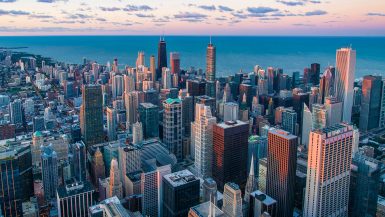Hiking to Everest Base Camp (EBC)
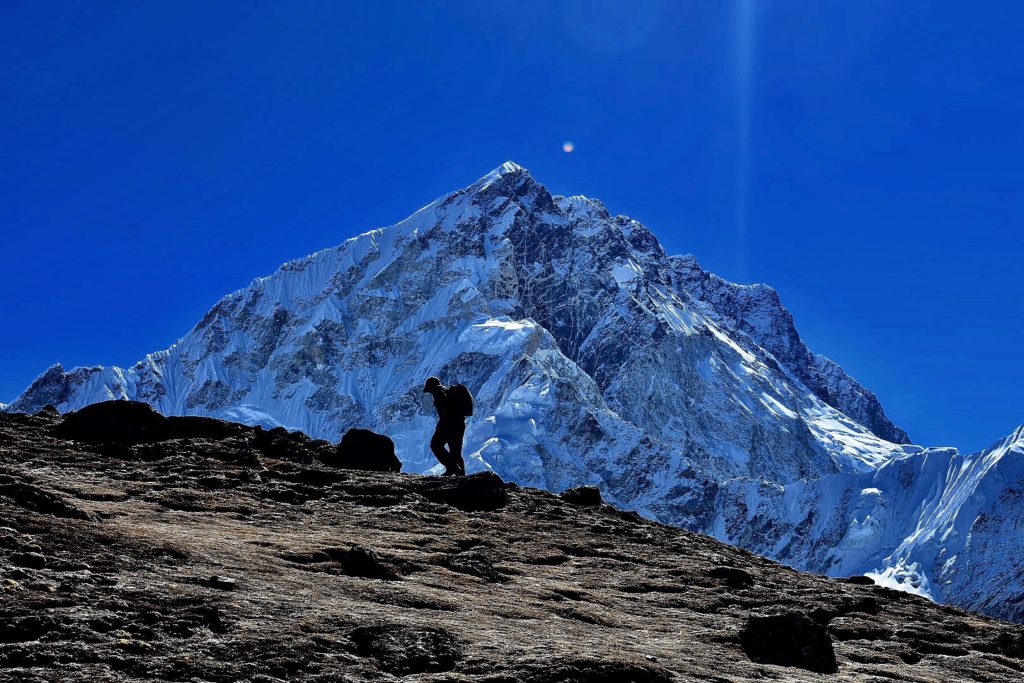
I literally woke up one day, and thought, “I want to hike up to Mt. Everest Base Camp.” So, I went and did it. Just like that! Although there was some planning involved in order to fit the adventure into a specific window during the season that’s feasible. The entire trip itself was a flippin’ adventure. From start to finish. I did a round trip hike to Everest Base Camp in 11 days. In total, 8-9 days are spent hiking to Everest Base Camp, and 2-3 days are spent hiking back down through the Himalayas. Along the way, 2 people died, and many others were airlifted to lower altitudes to deal with various medical issues.
In This Post, Hiking To Everest Base Camp:
- Finding The Right Guide and Company For Your Trip
- 10 Essentials For Packing
- Arrival In Katmandu
- Lukla, (World’s Most Dangerous Airport) The Start of the Journey
- The 8 Day Trek To Everest Base Camp
- Everest Base Camp
- 3 Day Trek Back To Lukla
- Saying Goodbye
- Reflection
Finding The Right Guide/Company For Your Trip
Do you have the choice to do this hike on your own? Absolutely, however, it’s actually quite dangerous and I would strongly recommend against it. There were two separate occasions that people died (2 people) while on the trail. They were unguided. Having the right guide is essential.
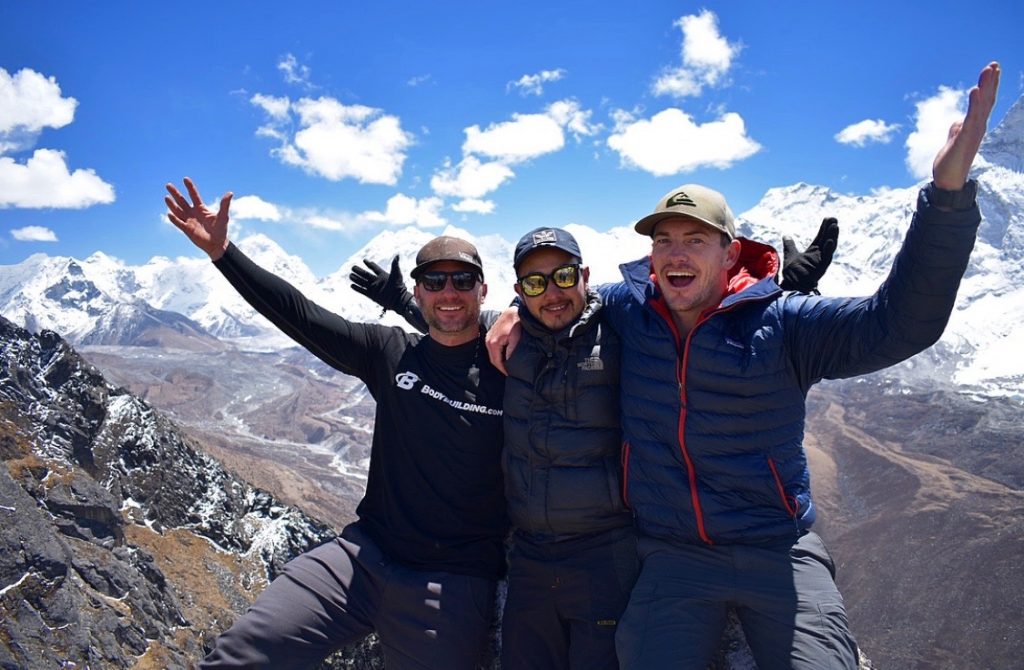
I did extensive searching and I found the best bang for your buck was with a company called “Adventure Great Himalaya.” They offer great prices and great guides. We were well taken care of. Their price is Extremely cheap considering it pays for rooms at tea houses and food. One of the best options is being able to book a private guide, a porter for your gear and not be placed in a large group of random people. Best price, and best guides for your trek to Everest Base Camp, use them.
10 Essential Items You Need To Pack
Most people, when going on a trip over-pack and bring way too much stuff. When I hiked to Everest Base camp, I was in the middle of a Round The World Trip with just a 46L Osprey back pack. Everything I needed for each different climate was in there. Being prepared for the Himalayas is a challenge in itself let alone packing everything into a small bag and having everything deemed necessary. What you need to be successful and comfortable as well as being essential is as follows:
- Hiking boots and hiking socks.
- A couple of pairs of Hiking pants that can convert to shorts.
- 3-4 pairs of long underwear as well as regular underwear. (Think Layers, it gets warm and really cold)
- Comfortable hiking shirts or regular T-shirts.
- A Beenie or head cover to keep your head warm.
- Gloves.
- Sunglasses and Sunscreen.
- ReUseable Water containers and purifying tablets.
- A Down Jacket.
- 3 packs of baby wipes (TRUST ME ON THIS)
Most of all, bring a great attitude for some adventure. The tour company will have a list of what you need to bring and instructions of getting into the country of Nepal. Another item that would be wise to bring on the trail is cash in the form of Nepalese Rupees. Bring about $700 -800 worth or pull it out of an ATM (beware of fees). You will need cash on the mountain to buy anything outside of what the tour provides. This Includes extra food, snacks, alcohol (there are Pubs along the way) medicine, emergency helicopter tickets off the mountain, Tips for your guide and porter, souvenirs, or even items that you may have forgot. Shops sell items along the way. You can find ATM’s in some of the villages like Namche.
Arrival In Katmandu
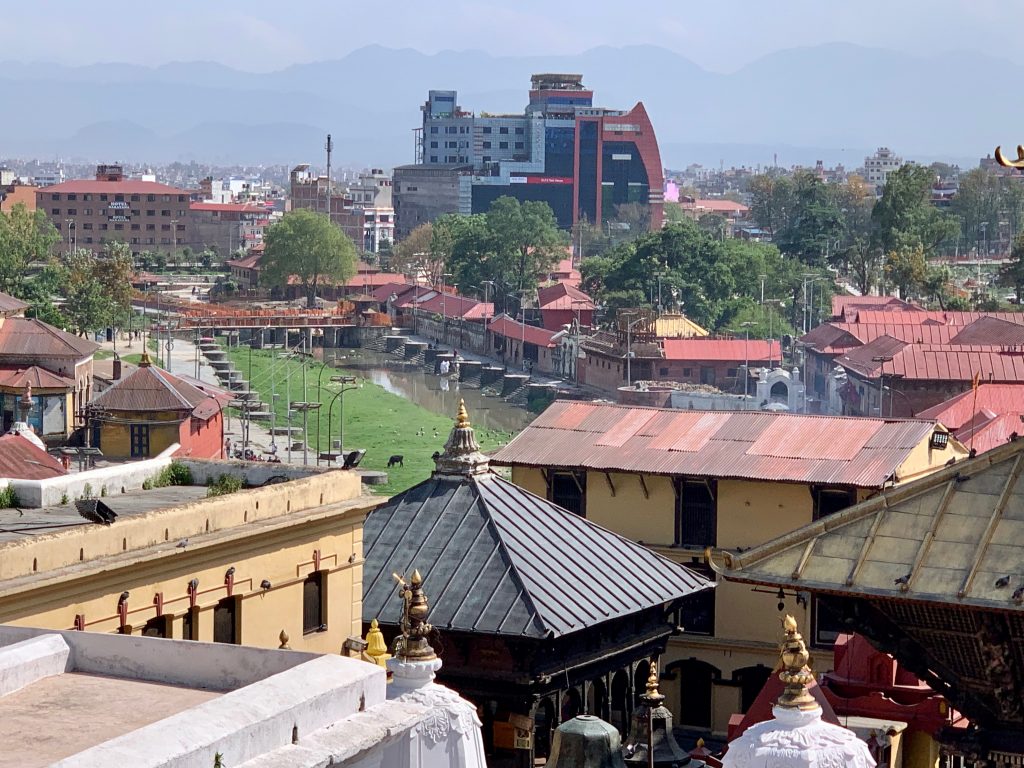
Upon arriving in Katmandu, You will have to go through customs and get an entry permit and pay for your visa. Nepalese visa requirements can be found here. You can arrange for a pick-up with your tour company, or negotiate a ride with a taxi to Tamal (ta-mal), a neighborhood in Katmandu. Don’t pay anymore than $10 US.
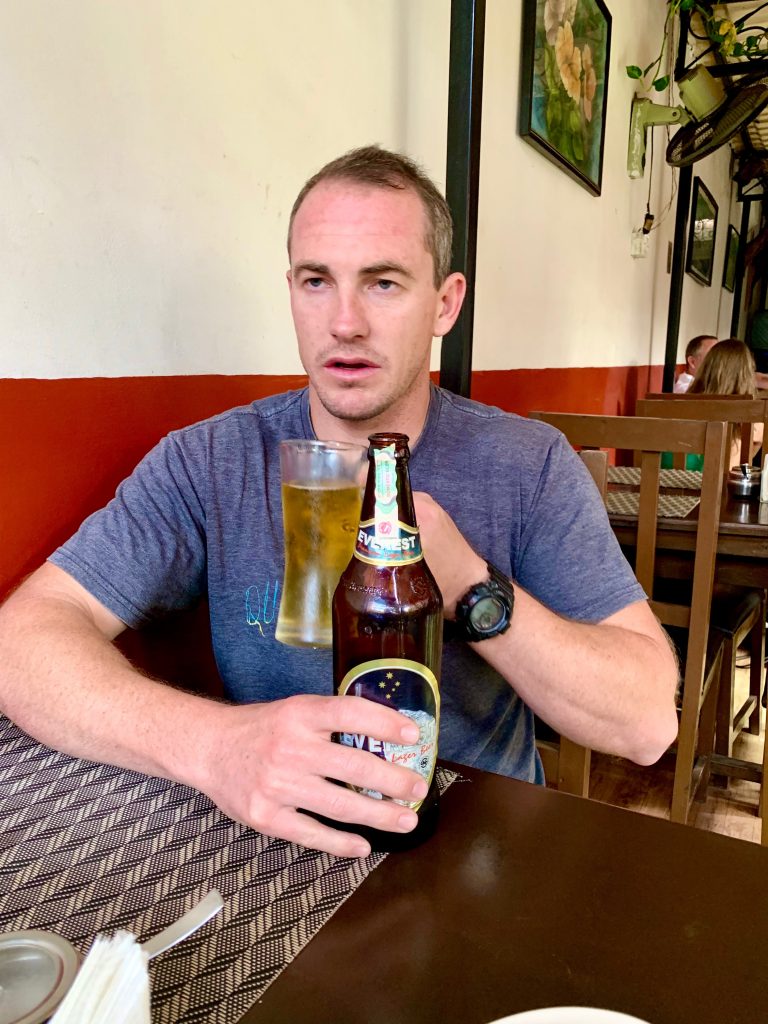
Once you get to your hotel, you can go and explore the town a bit. The streets of Katmandu are alive and bustling. Its alive with many other tourists, vendors and food! Plan to be picked up early in the morning and taken to the airport for a flight to Lukla.
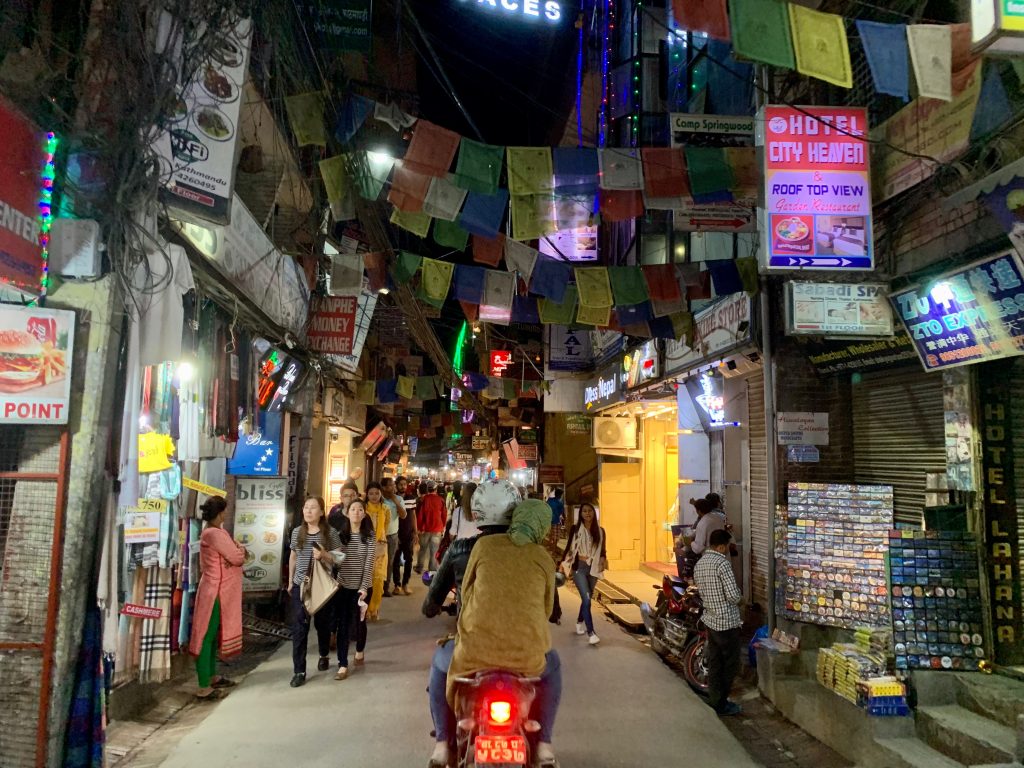
Lukla, The Starting Point of the Journey and Worlds Most Dangerous Airport.
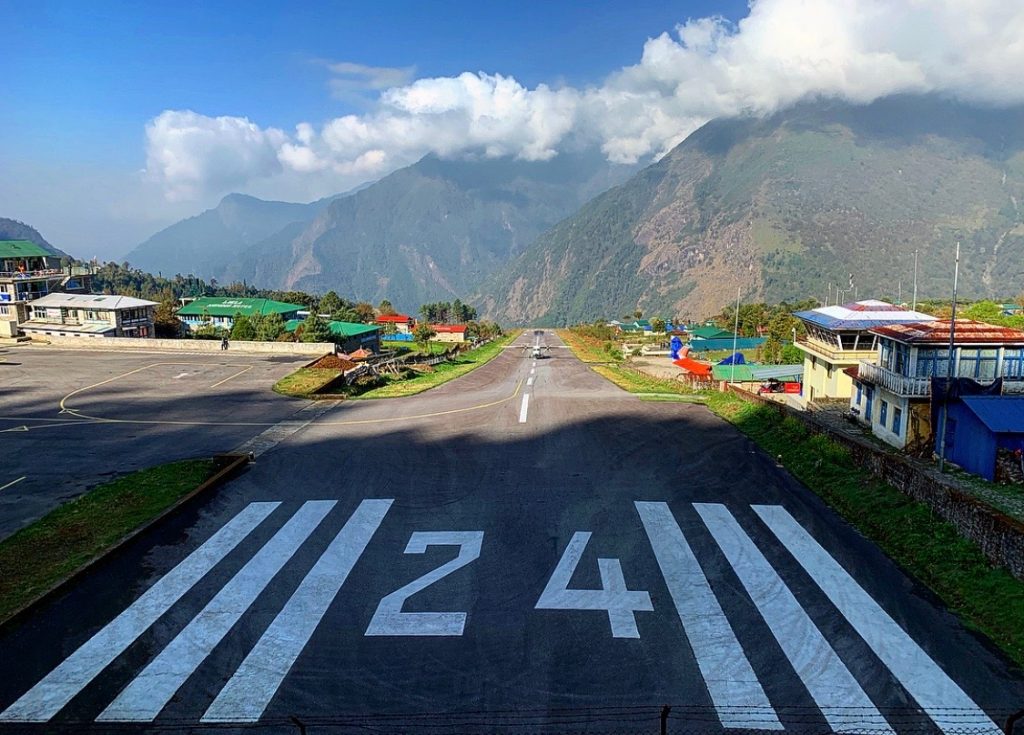
After meeting your guide prepare to be taken to the airport and loaded onto a plane and flown to the Lukla airport. Provided the weather is good. The Tenzig-Hillary airport is located in a small village on the side of a mountain at an elevation of 9,334ft, the runway is extremely short and placed on an angle thats ends at a mountain, and at the other end, drops off a cliff. There is no room for error. In fact, two days before arriving, an airplane collided with a helicopter after it ran off the runway which killed three people.

Lukla is the launching pad for the beginning of the trek. After landing safely and watching other flights take off and land, It was off to a Tea House for a quick breakfast. Afterward, the first leg of of your hike awaits.
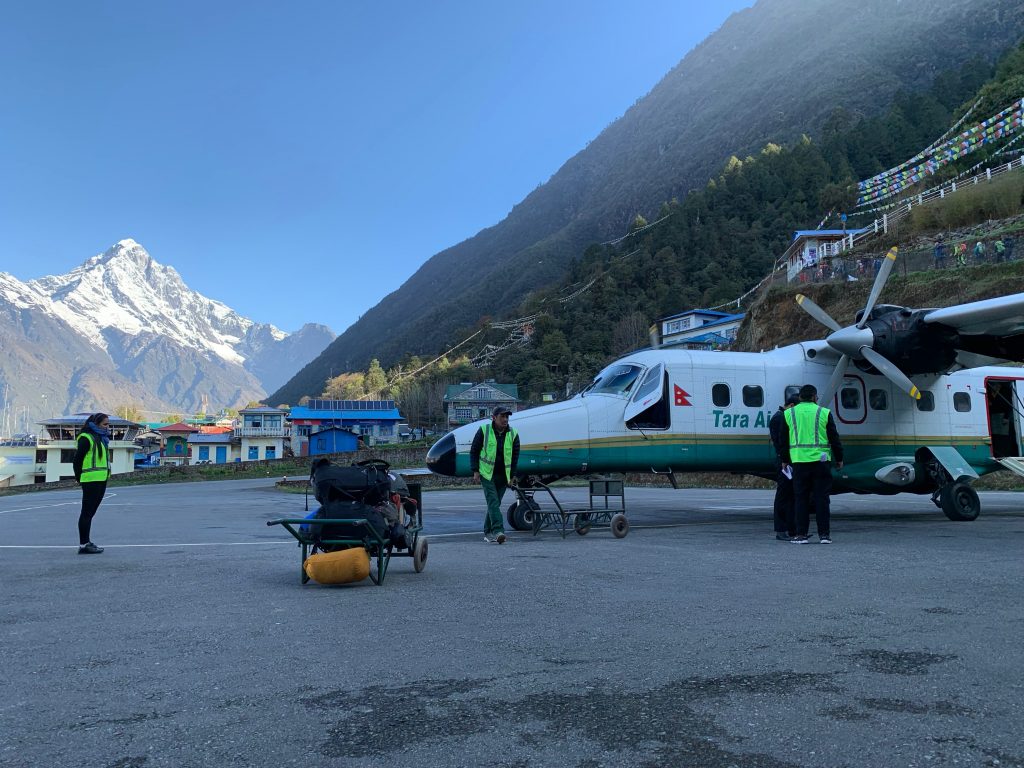
The 8 Day Trek To EBC
Day 1
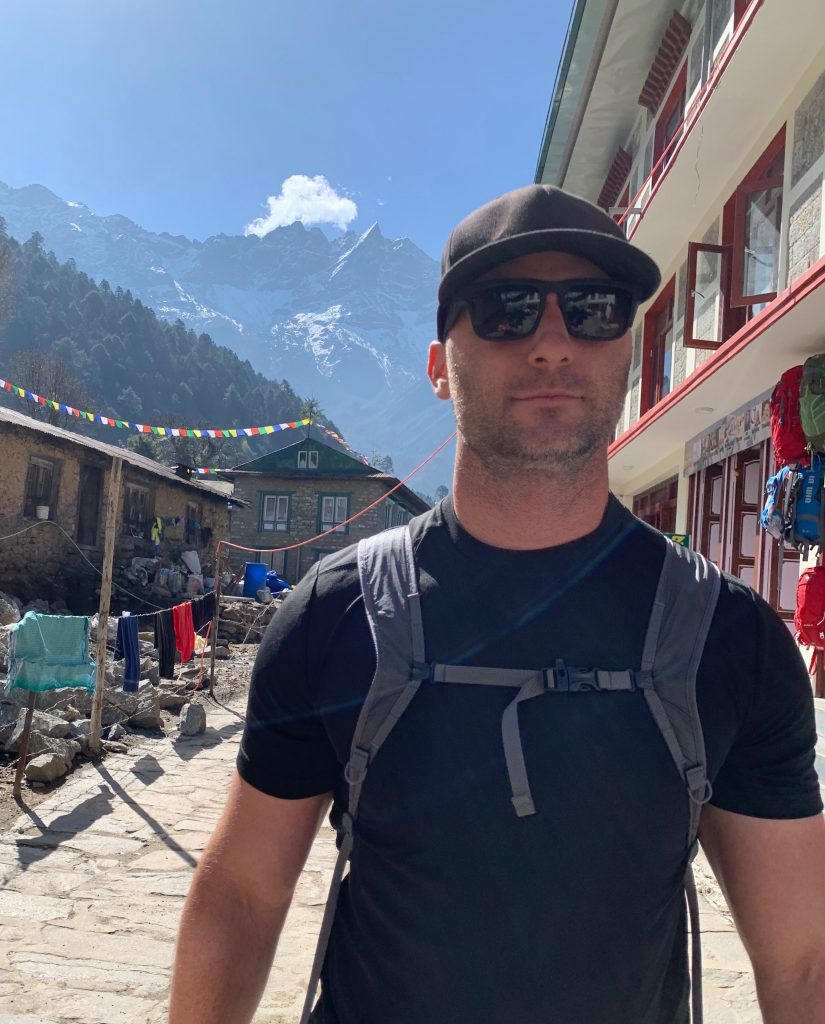
A walk through Lukla leads to the main pedestrian highway. This trail is in the lower parts of the Himalayas. Transiting bridges and the lower trails is somewhat easy. However you can feel the thin air, but you are to excited seeing the mountains, caravans of mules, and the way people live in the region to even care. Porters are carrying insanely huge loads of luggage, construction wood, food and supplies for upper villages and much more. The four and a half hour hike seems short with the ecstatic attitude I have. We quickly reach our first Tea House in Phakding (fak-ding).

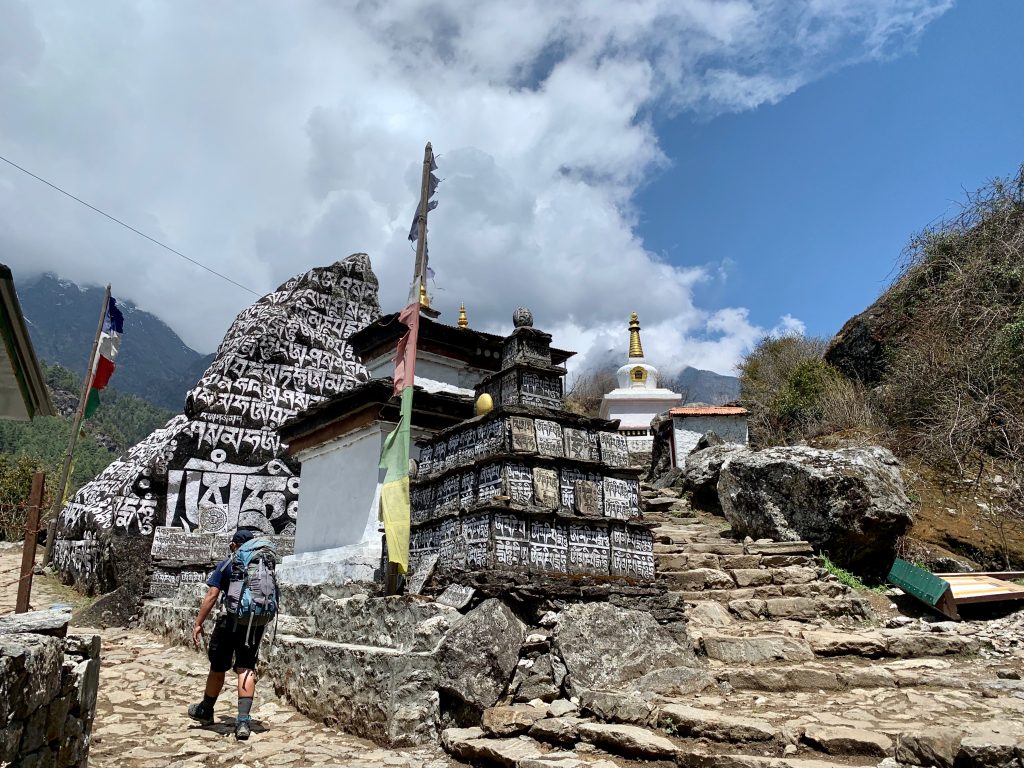
Day 2
Beginning the day a bit later than most, we caught up on sleep. Alex and I would actually be the ones to always leave later than other groups but would still manage to pass everyone and make up time on the trail. The Second day required a longer hike, about 8 hours. However, we managed this leg up to the Namche (nam-che) Village bazaar. This portion required a grueling set of switch backs that climb over 1,000 feet in elevation.
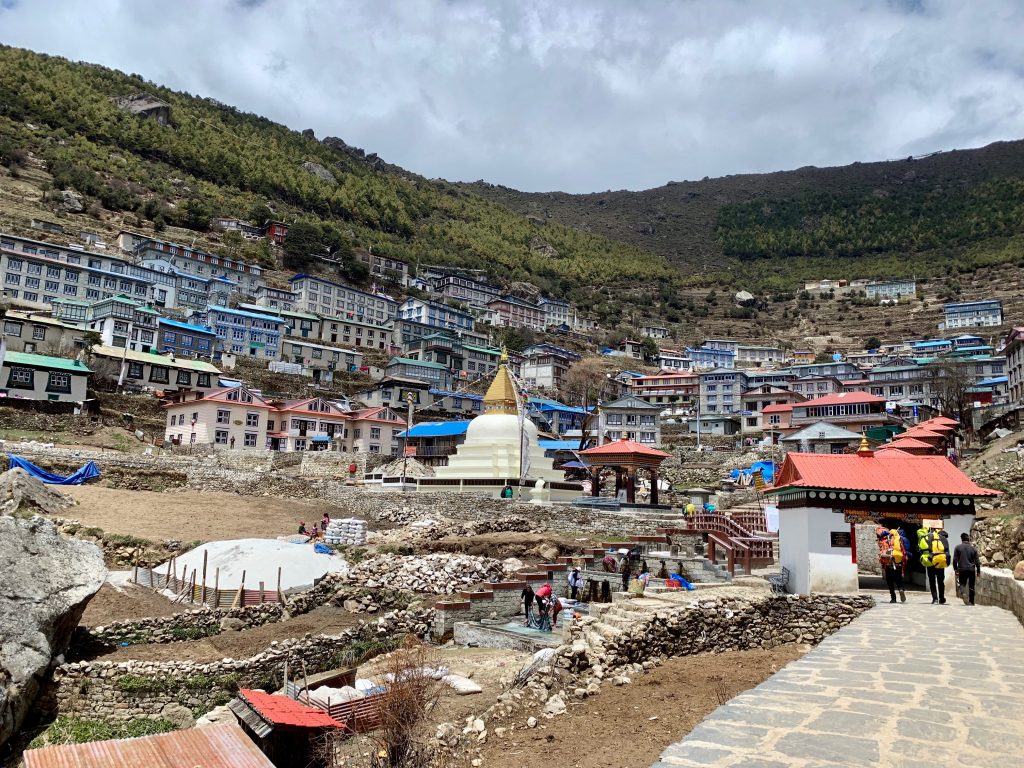
The next day would be a day of acclimatization to adjust to the higher elevation of over 11,000 feet. Naturally, we took advantage of the world’s highest pub. Found some live music as well, played by the locals. Dope!
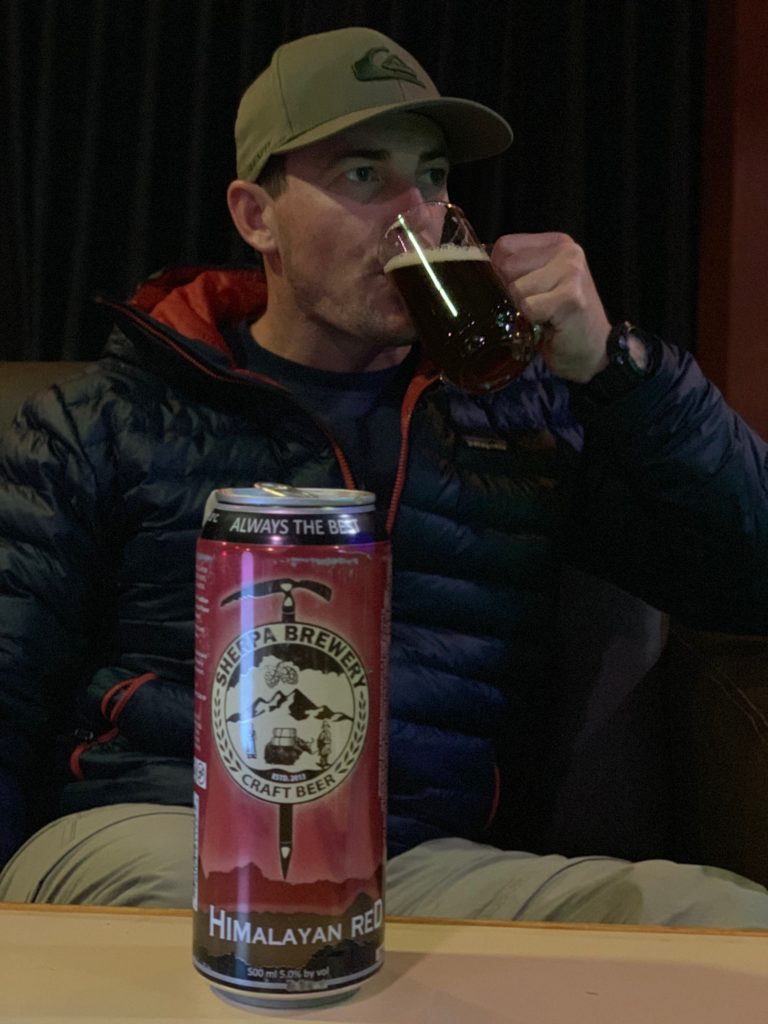
Day 3
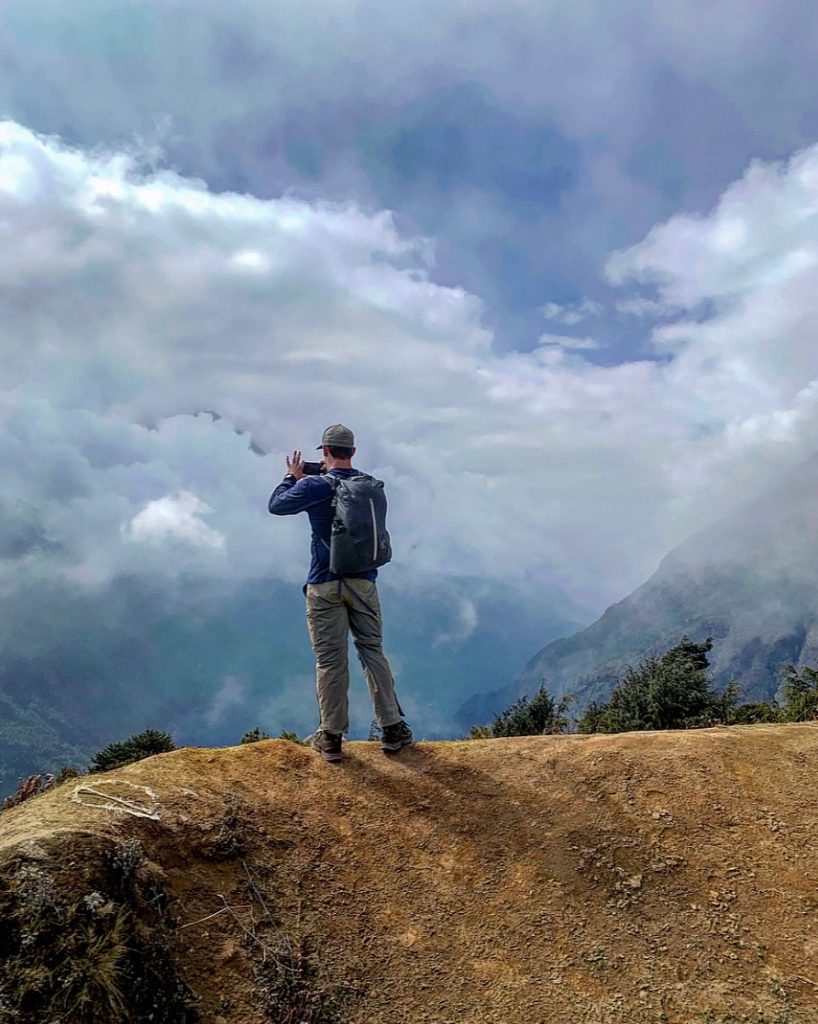
The third day started as any other, with breakfast of course. An acclimatization hike ensued shortly after. This is essential in helping the body adjust to the lower oxygen levels found at higher elevations. It was truly fascinating to explore the area around Namche and visit the Temples and Shrines.
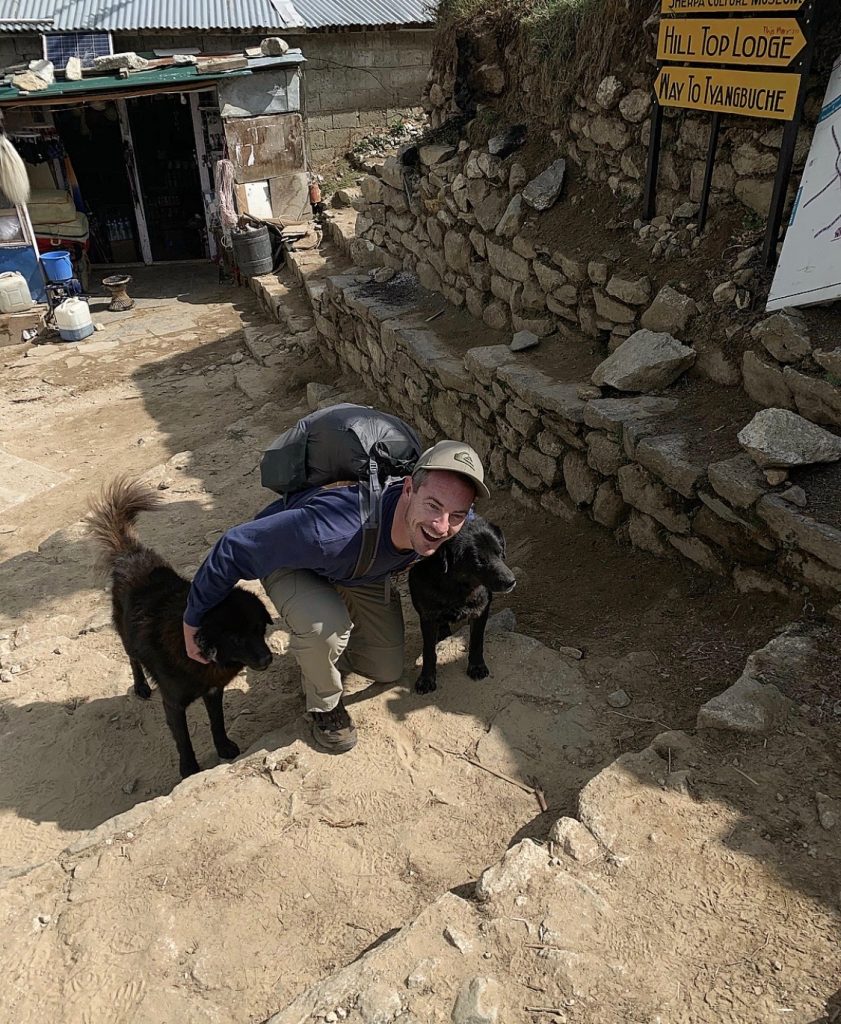
Day 4
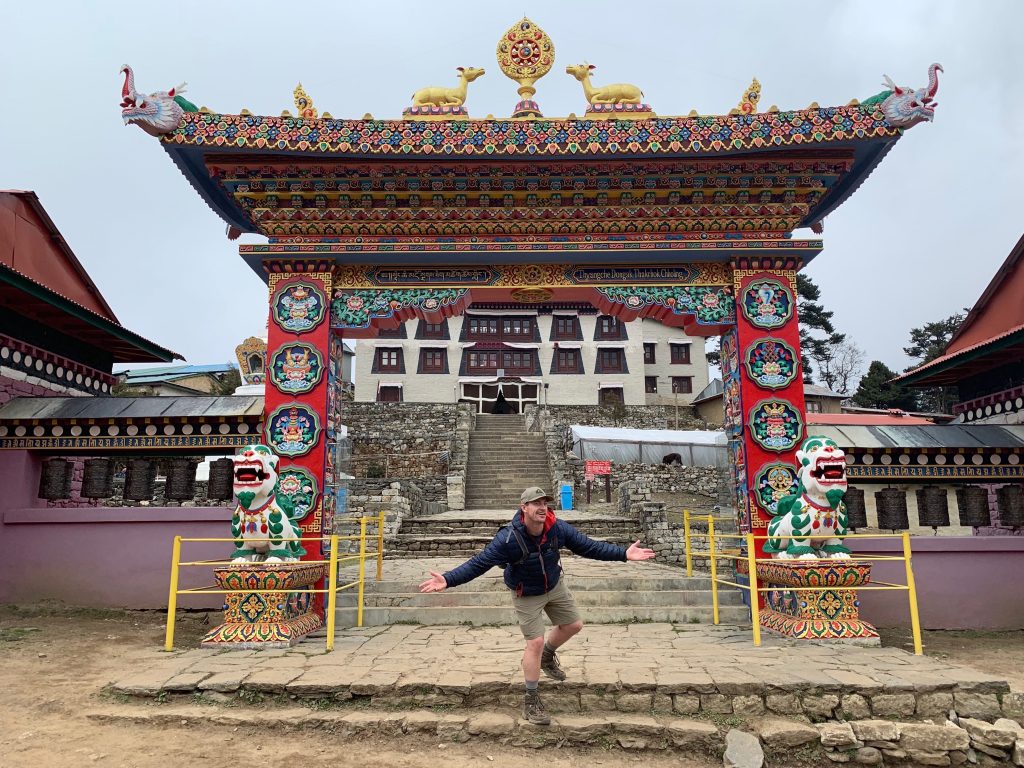
Requiring a six and half hour hike, the leg of this journey would take us up to an elevation of about 13,000 feet and to our next village called Tengbouche (tang-boo-che). This required a climb up a set of switch backs as well, however this experience was much less intense. The tea house we stayed at was my favorite place along the way. For a measly $25 USD extra, we could stay in a room with a warm shower, and heated beds. HEATED BEDS!!! At this point it would get really cold at night. This would also be the last time I shower for the next 5 days. Make a note, when you pass Namche, you should refrain from eating meat on the menu. Simply because the meat is being hiked in and you run the risk of getting food poisoning from spoiled meat.
Another hiker I spoke with at our Tea House called “Rivendale,” told me how she was hiking back down after she had succumbed to major symptoms of Altitude sickness. The only way to combat altitude sickness is to get back down to lower altitudes.
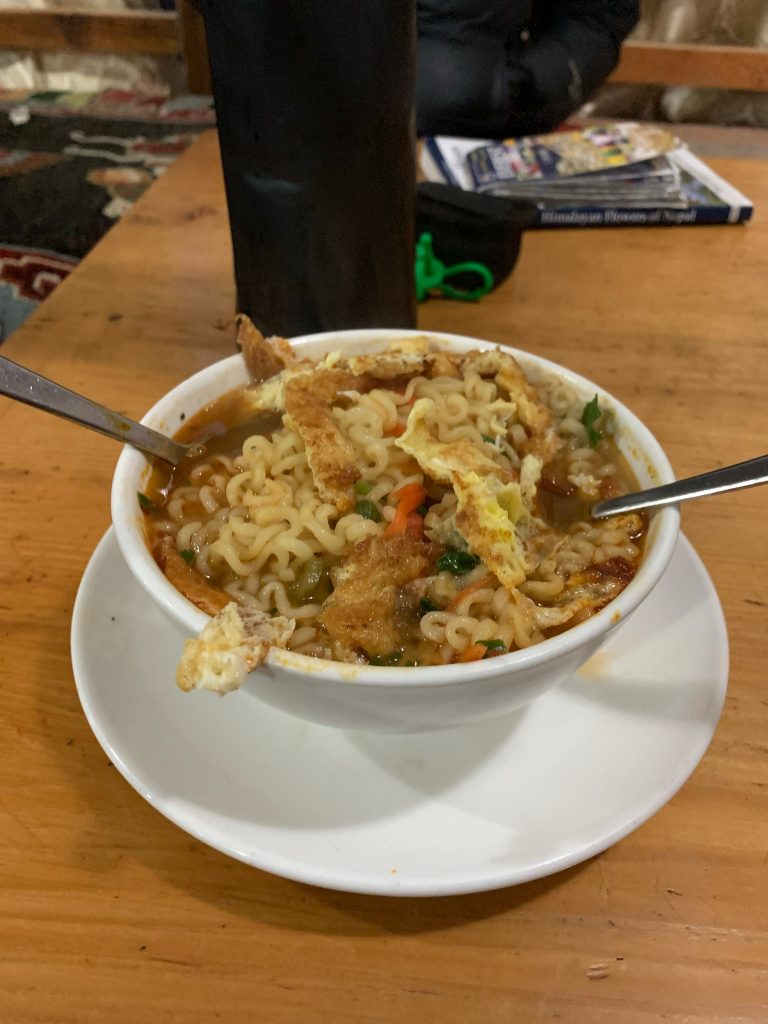
Day 5
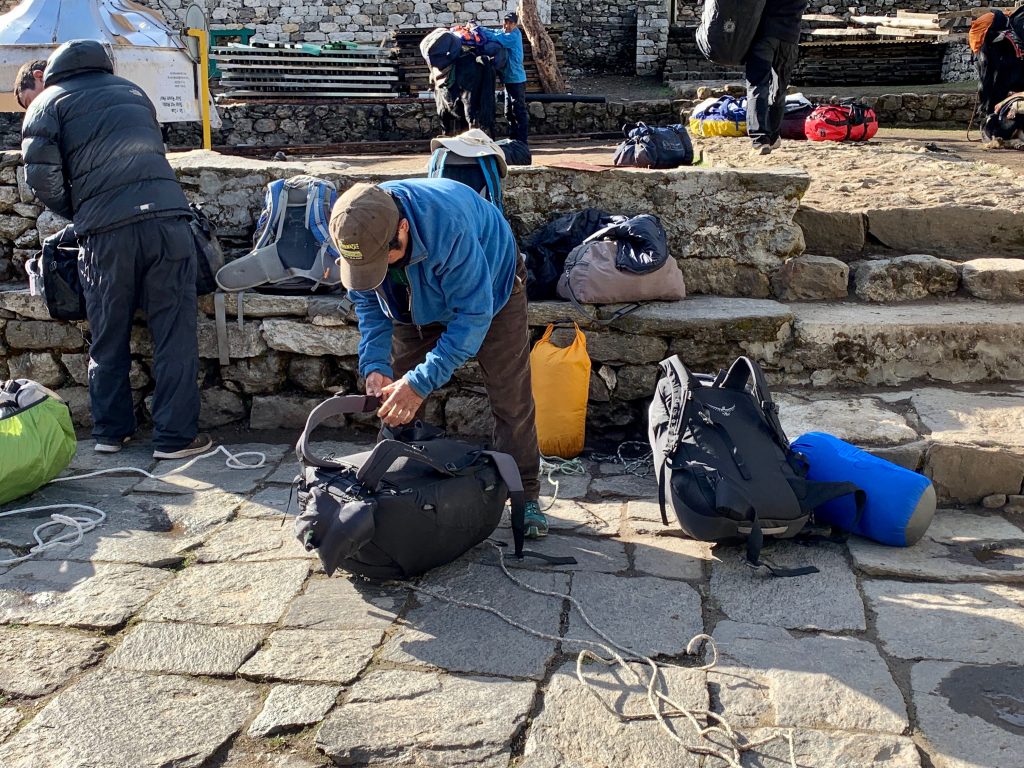
Starting out day 5 with a slight headache. The morning is cold but the sun is out and it will heat up after we begin hiking again. Breakfast is the usual, eggs and toast with a homemade jam. We load up and help our porter with our gear. Our next destination is going to be Dingbouche (ding-boo-che). While hiking this section that would take about 6 hours, we encountered mountain bikers. This was super frustrating as the trail wasn’t very big at all. The bikers were all on a low gear and we were able to walk faster than them on the climbs. It turned into a traffic jam however. Finally, we would just pass them and say good riddance to dealing with that.
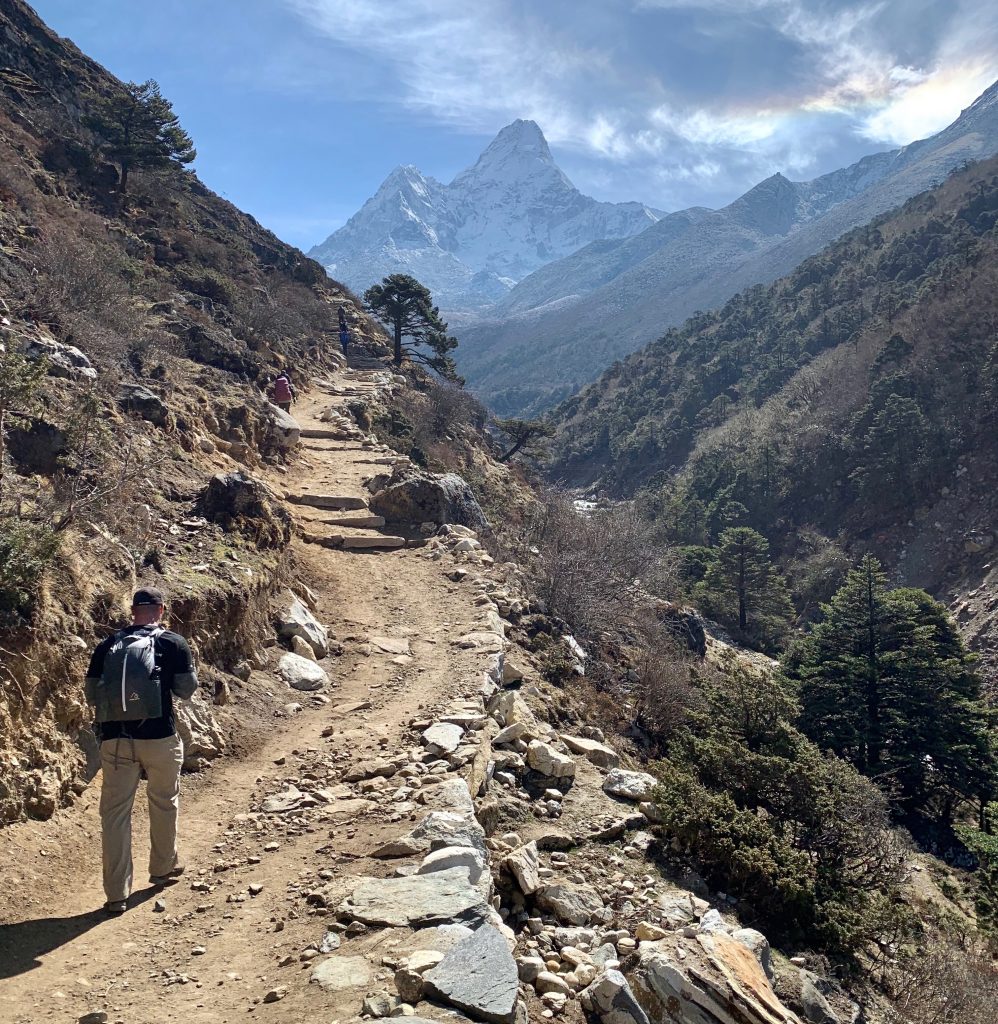
Upon arrival into Dingbouche, it is required to hike around the outside of the village to get to the tea house. The main goal here was to get my stinky clothes and get them washed and hung to dry. Everyday at dinner time, we would check our Oxygen saturation levels. Mine was at 83%. a normal O2 Saturation should be between 95-100%. Hypoxia can set in and cause you to make irrational decisions, become more clumsy or have other detrimental effects on the body due to the cells starving for oxygen.
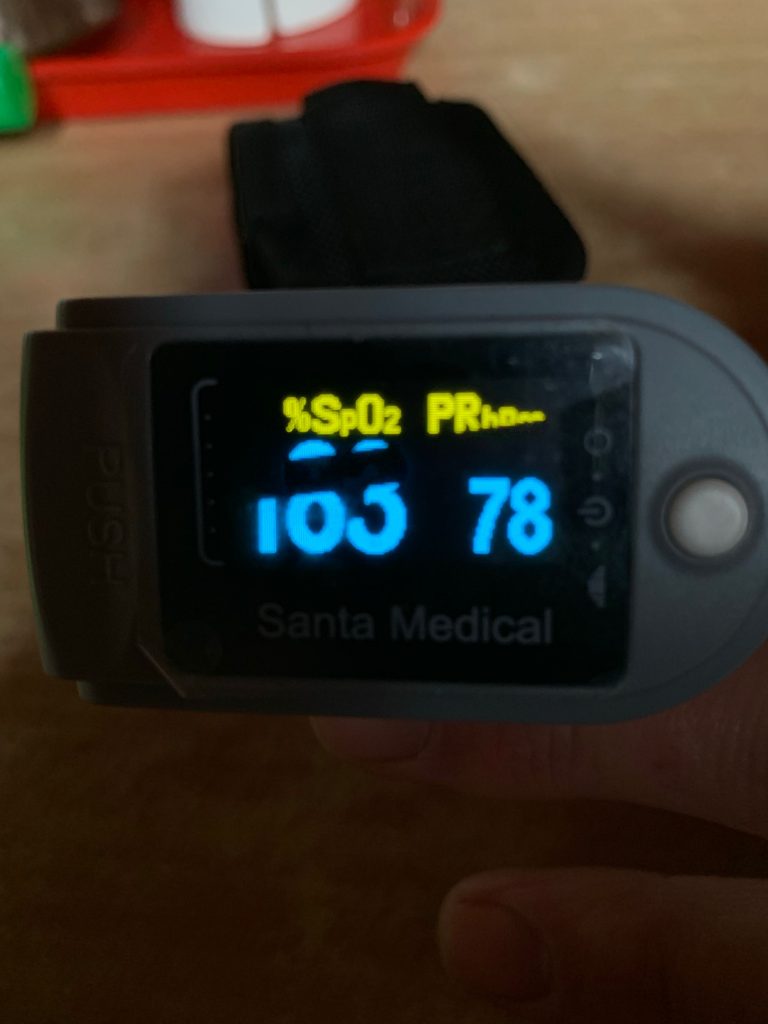
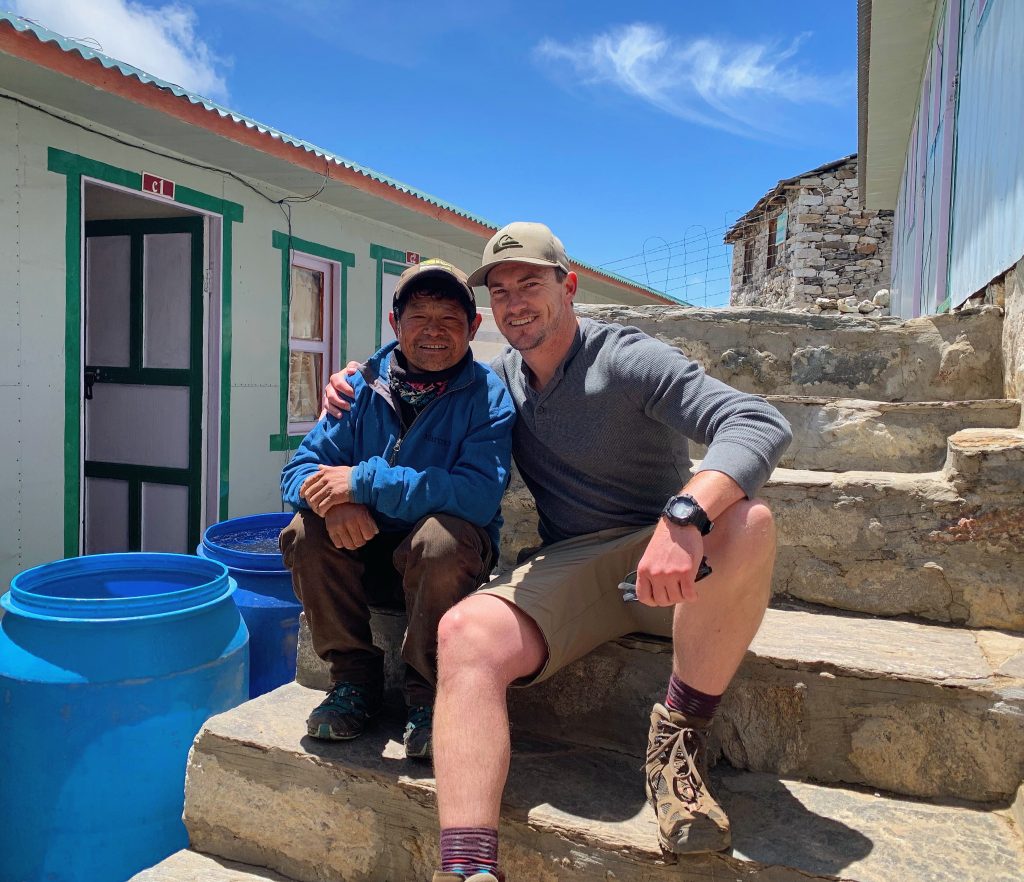
Day 6
Day 6 will be an acclimatization hike. Dingbouche is located at an elevation of about 14,500 feet. This is like being at the top of the highest mountain in the Rocky Mountain range of the United States. The air is thin, I am begining to not sleep very well and I am having a headache in the mornings that subsides during the day.
The goal today is to hike to an elevation of a little over 16,000 feet. I am not feeling like hiking at all on this particular day. During the hike, I begin to notice some numbness and tingling in my lips and finger tips as well as some tunnel vision. I quickly start doing simple math problems in my mind and begin touching my fingers together test for dexterity and cognitive function. I can see that my friend Alex’s lips are bluish from cyanosis. Awesome! An interesting thing happened here. Multiple people were airlifted out of this area due to severe altitude sickness.
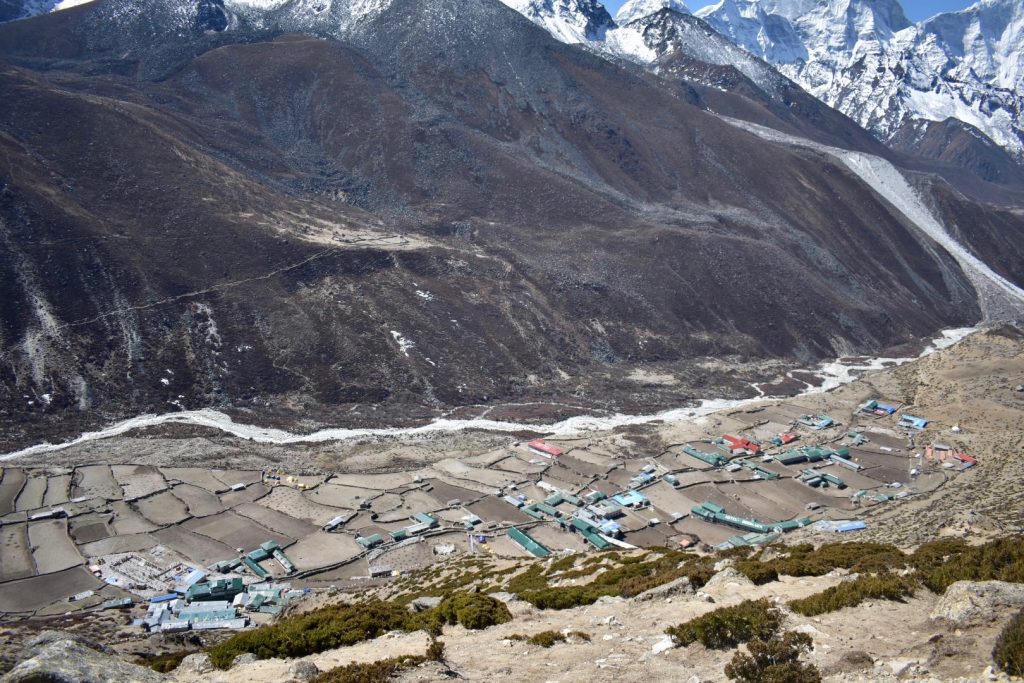
Our Guide Santosh keeps telling us the top is only another 20 minutes. I want to stop, my head is pounding. However I persevere as does Alex. We reach our goal and stop to take in the sublime beauty and observe the giants that surround us. Its breathtakingly beautiful.
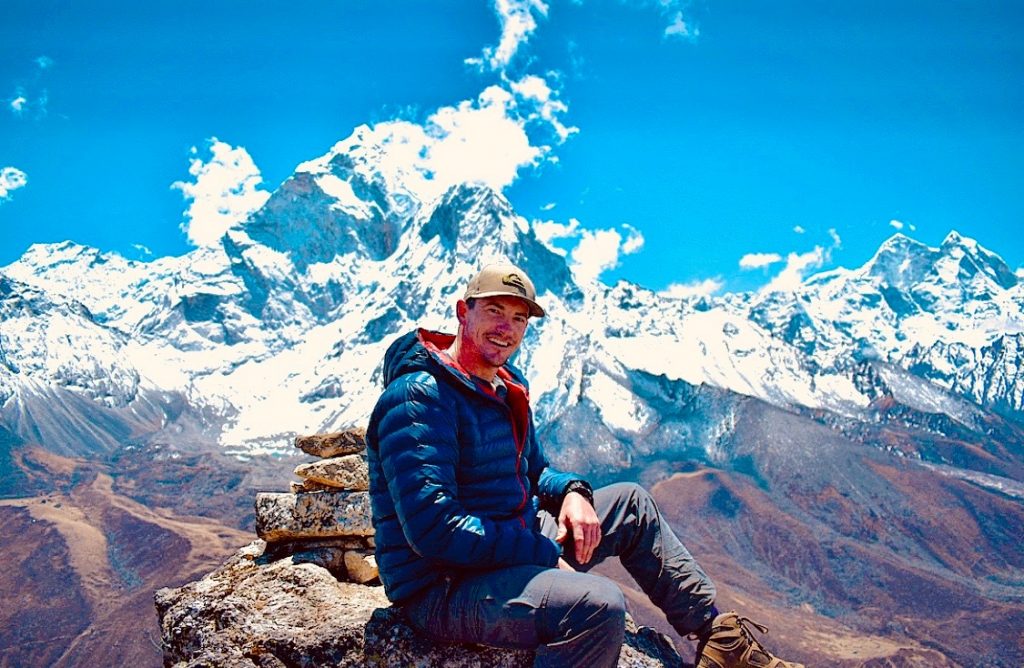
Overjoyed to go back down the trail to get lunch, i believe we started doing cartwheels or skipping. We rested the rest of the day and walked through the Village, stumbling upon a snooker pool hall. Seriously? How did they get these snooker pool tables up here? We made friends with the locals and played a couple of games with them. We needed rest to make the next leg of the hike so we said our good-byes.

Day 7
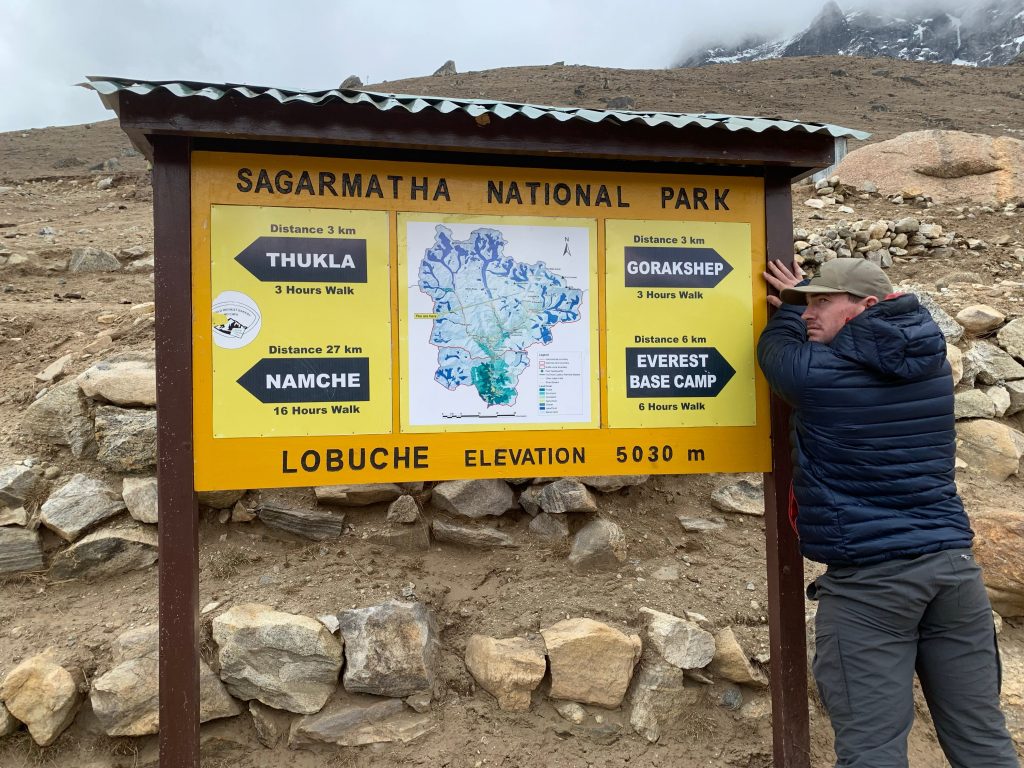
Starting out on our hike to Lobuche (Low-boo-che) was met with headaches. Lobuche is one of the last over night stops before reaching Everest Base Camp. At an elevation of 16,502 feet, the air is thin and you definitely notice this when hiking. The trail has a small portion of switch backs that gain altitude rather quickly. At the top, you will find shrines of past climbers who have lost their lives on Mt. Everest.
The hike itself was about 5 hours long and we passed and greeted people we frequently saw. Upon entering the village, you see dogs, other hikers and porters relaxing. We found our rooms and I quickly wiped myself down with Baby wipes to give myself a make shift cleaning. Since arriving around lunchtime, Alex and I explored the area a bit.
We found entertainment in watching the helicopters landing and taking off again with loads of bags, and people who were sick or whatever they were doing. The air was cold and a wind kicked up and sitting outside became uncomfortable. Finding a cafe (super random, I know) we sat down and grabbed “artisan” hot chocolate drinks. Labeled as “the best hot chococlate,” I disagreed, but still thoroughly enjoyed it, we sat and enjoyed the warmth in this small hut labeled as a cafe.
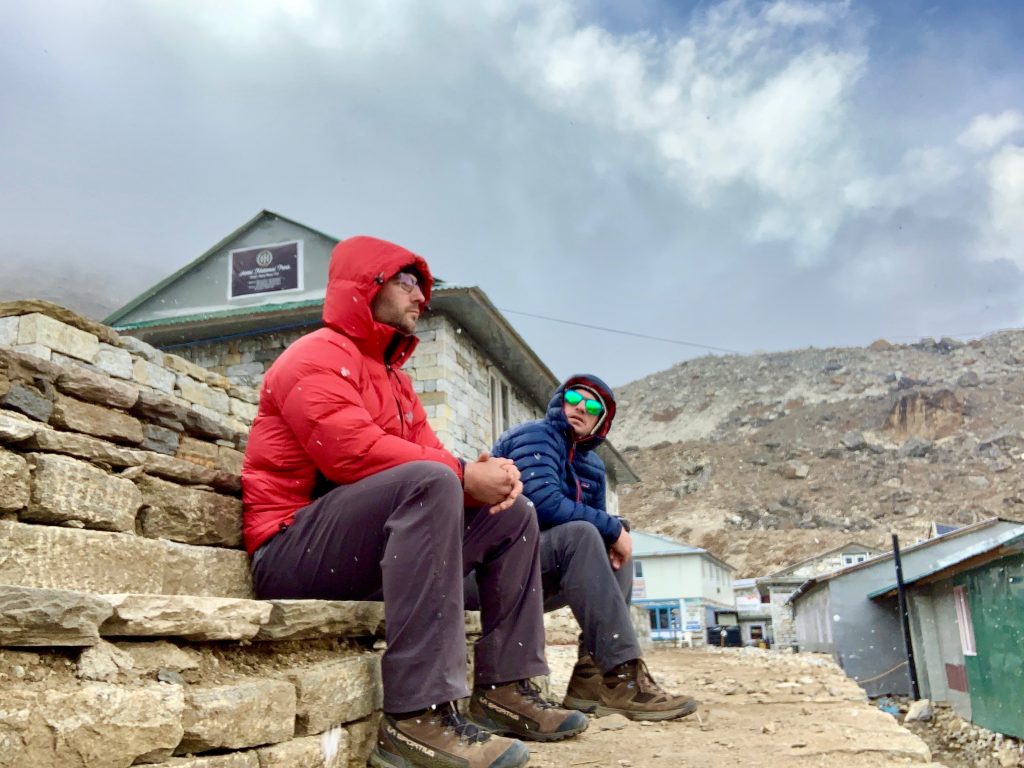
Walking back to our Tea House, we ran into some Aussie friends and had a little fun before returning and having dinner. The conditions start to become a bit more dire here in Lobuche. This is the last place you can fill your water which you need purification tabs to clean it. Past this village you have to use bottled water and unfortunately it means using plastic. Wasn’t happy about this. By the way, we slept terribly here.
Day 8
Day consisted of getting to Goraksep (Gor-rek-ship). While not an incredibly long hike, it seemed to take awhile to complete. This was the rockiest part of the hike by far. Our guide, Santosh, mentioned we could possibly make a push to make it to EBC if we had the time and the weather was good. My drive to hike and get there increased ten fold upon hearing this. I pushed Alex to his brink of hiking ability on this leg of our journey and we quickly arrived in Gorakshep. We took a break for lunch and immediately set off for the final push to Everest Base Camp.
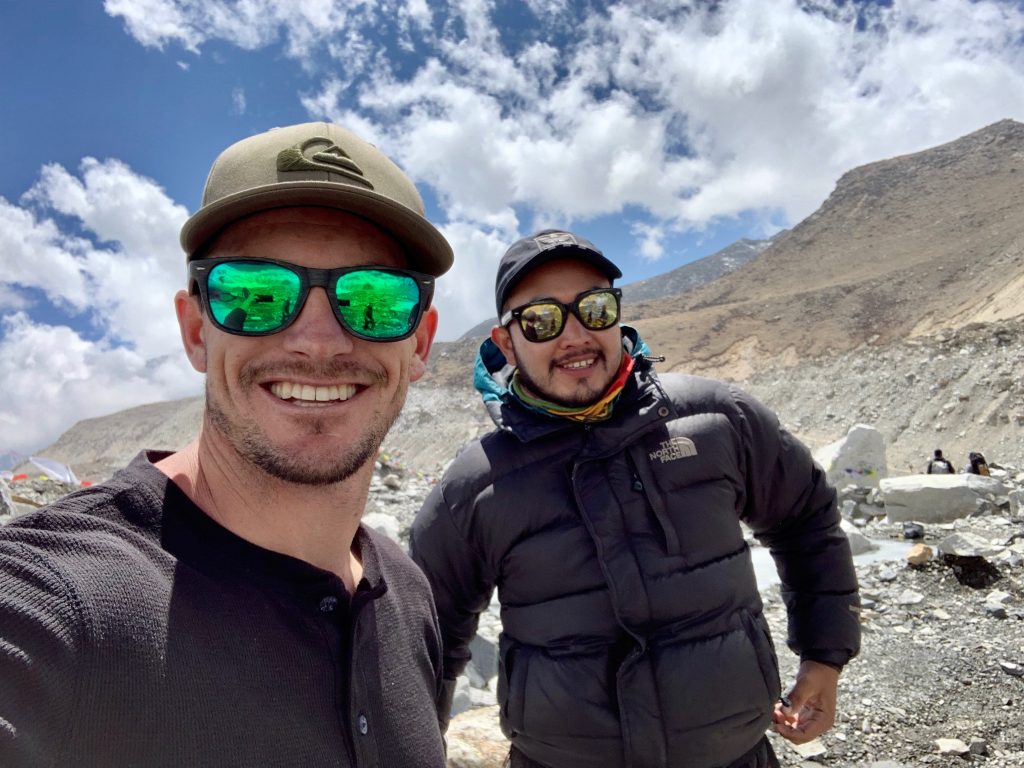
Walking through the Khumbu Valley, you quickly realize how extreme the final hike is. You have to hike on and through unstable rocks next to the Khumbu Glacier. The valley is alive! The rocks are moving and you can hear them fall, and move around you. The glacier is moving, you hear it creak and pop as the ice persistently moves rocks and breaks off from the slide. We witnessed multiple avalanches as well, sounding like a huge crashing wave, it reverberates through the valley, showcasing the immense force and power of its destiny with gravity.
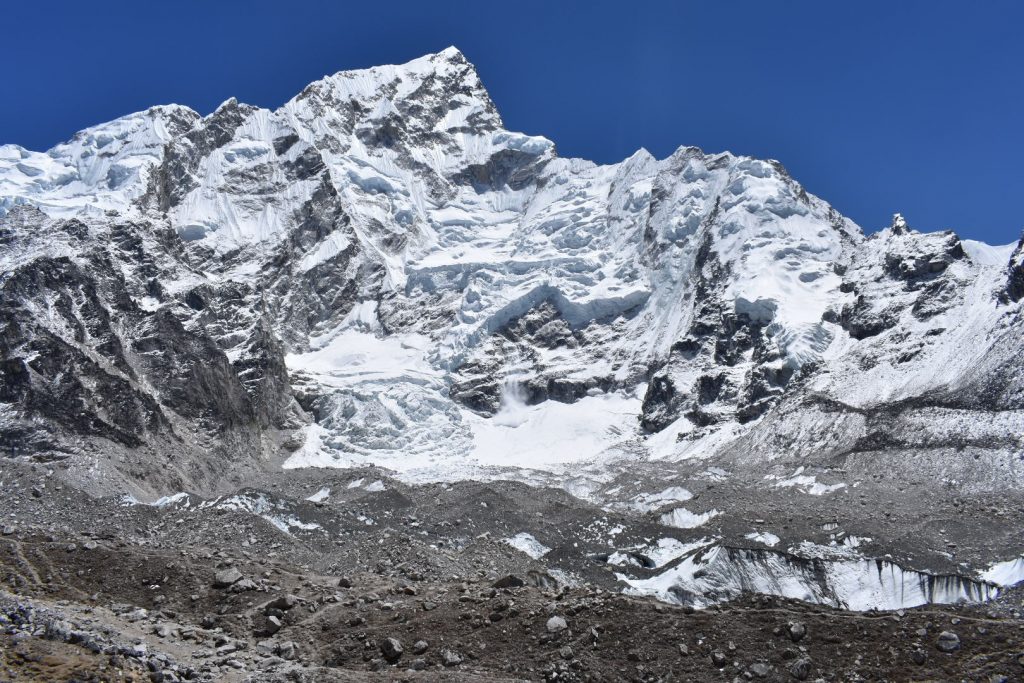
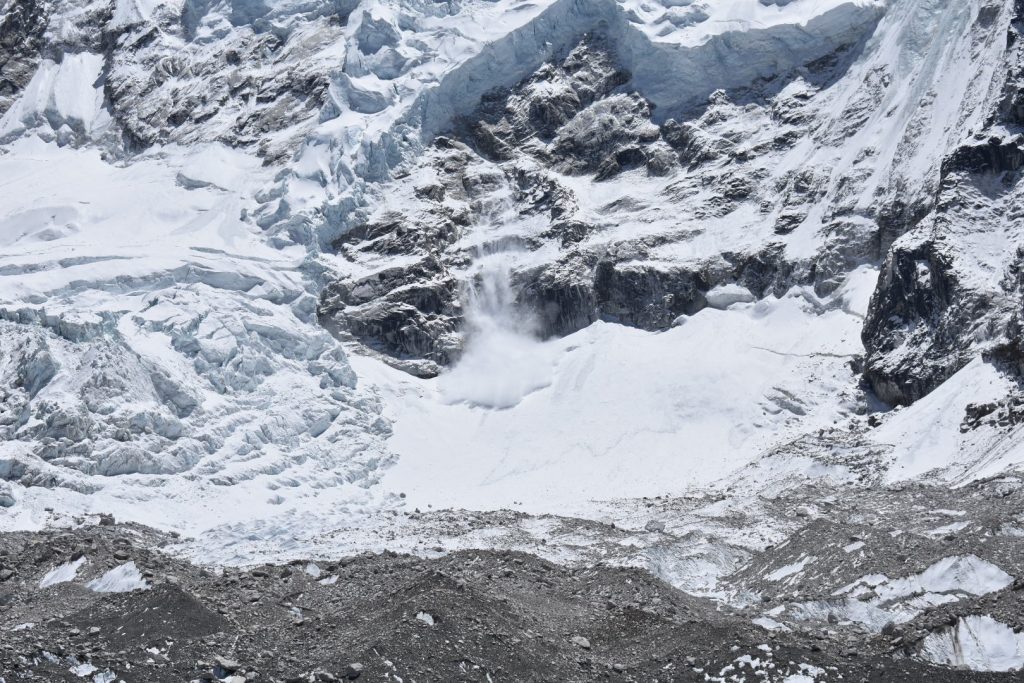
Everest Base Camp
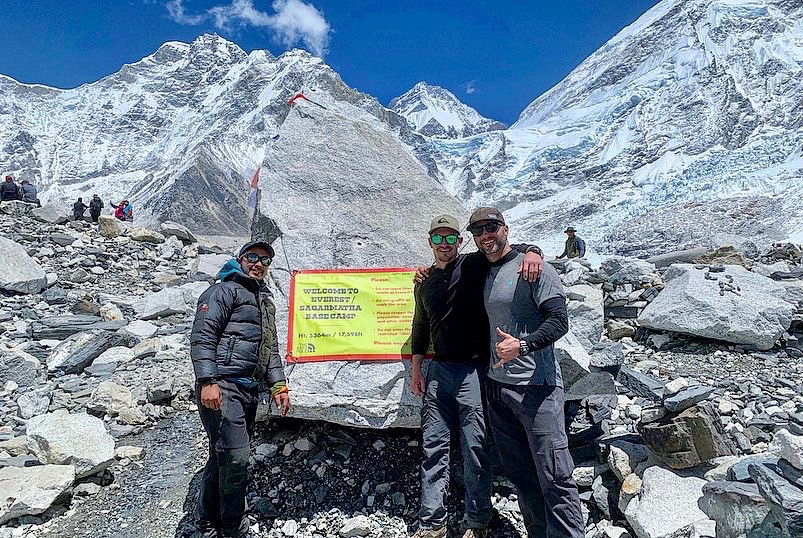
With the weather still in our favor, we pushed the final 20-30 minutes to make it to Everest Base Camp. The mood was ecstatic! We pushed and made it with a small amount of other hikers already there. The feeling of accomplishment when you make it is incredible. By far, it has to be one of the best moments in my life. You won’t know it until you experience it yourself. Dad, aka Santosh, gave us 20 minutes to explore EBC. We probably stayed for about 45 minutes. Sorry dad!

Everest Base Camp is at an elevation of 17,598 feet and is one of two base camps. The one we were at was on the south side located in Nepal, the other being located in Tibet. It is scattered with yellow tents everywhere of the various outfits making their attempts to summit “Sagarmatha” (sag-are-mat-thuh) as the local Sherpa people refer to it. We know it as “Mt. Everest” which isn’t even visible from camp. We goofed off a bit, took some pictures and it was back off to Gorakshep Where we would spend the night.
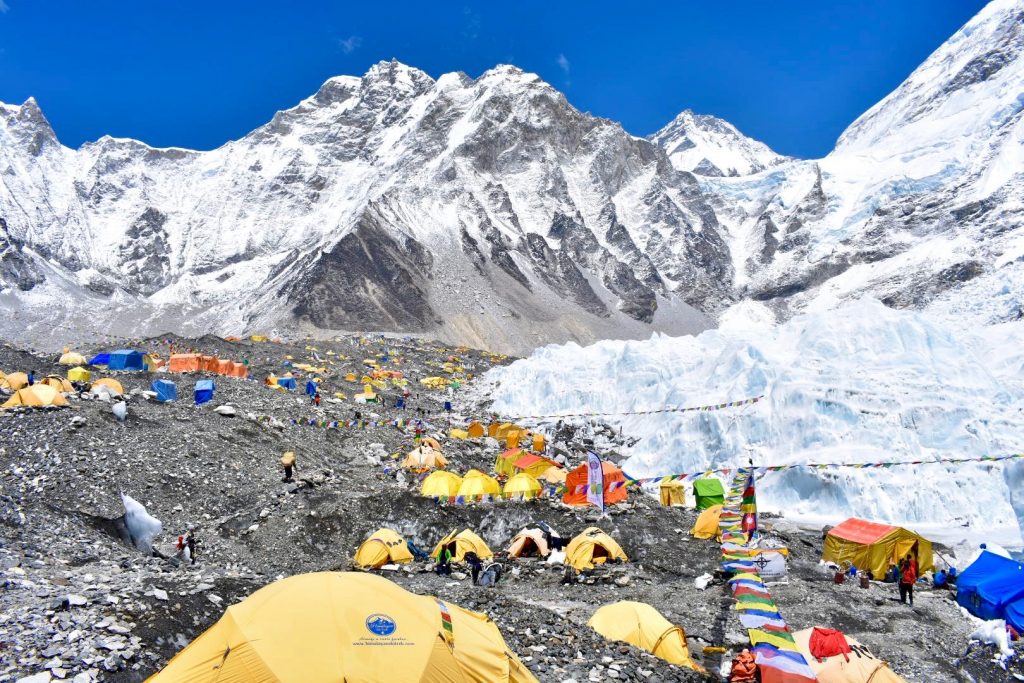
3 Day Trek Back to Lukla
Day 9
Ahead of schedule, and having not slept well at all with a constant headache and analgesics not having any effect whatsoever, it was time to hike another 1000 feet in elevation to Kala Patthar. In order to view Everest, you need to hike to Kala Patthar (Ka-la Put-ar) at an elevation of 18,514 feet. Waking up before dawn, we make our hike up to Kala Patthar in the dark as the sky begins to brighten. We can now see the peak of Mt. Everest popping up above two other giant peaks.
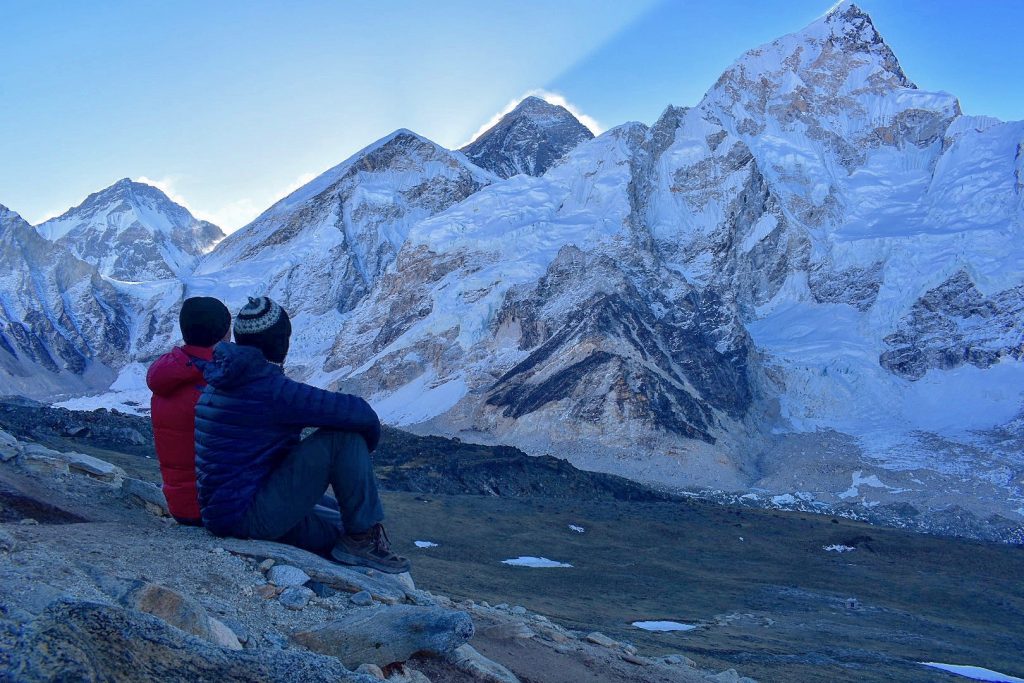
After the sunrise, we again run into our Aussie friends and exchange information in order to meet up back in Katmandu. Coming down, we also run into Teri and Scott and are elated to share this moment with friends we made along our journey. We haven’t had breakfast yet and quickly make our way back down to Gorakshep. We eat, formulate a plan of where we want to hike and decide we want to hike back to Rivendale, the tea house with the heated blankets and showers. Mind you, this is an 18-20 mile hike to undertake but I haven’t showered since day 4 and the baby wipes are not cutting it anymore.
We check with Kancha to make sure he can handle that distance and he assures us it’s not an issue. We set off, and cover the 18-20 miles in about 6 hours.
Day 10

After a warm shower, a good nights rest and headaches that have subsided, we leave Rivendale Tea House, and push through to Namche Village where we will stay the night and celebrate a little. We had heard from locals about a cafe that sells Yak burgers that are superb. All that was on our minds was having something to eat Other than Dal Baht (which is delicious and you get refills) and Momo (dumplings of sorts).
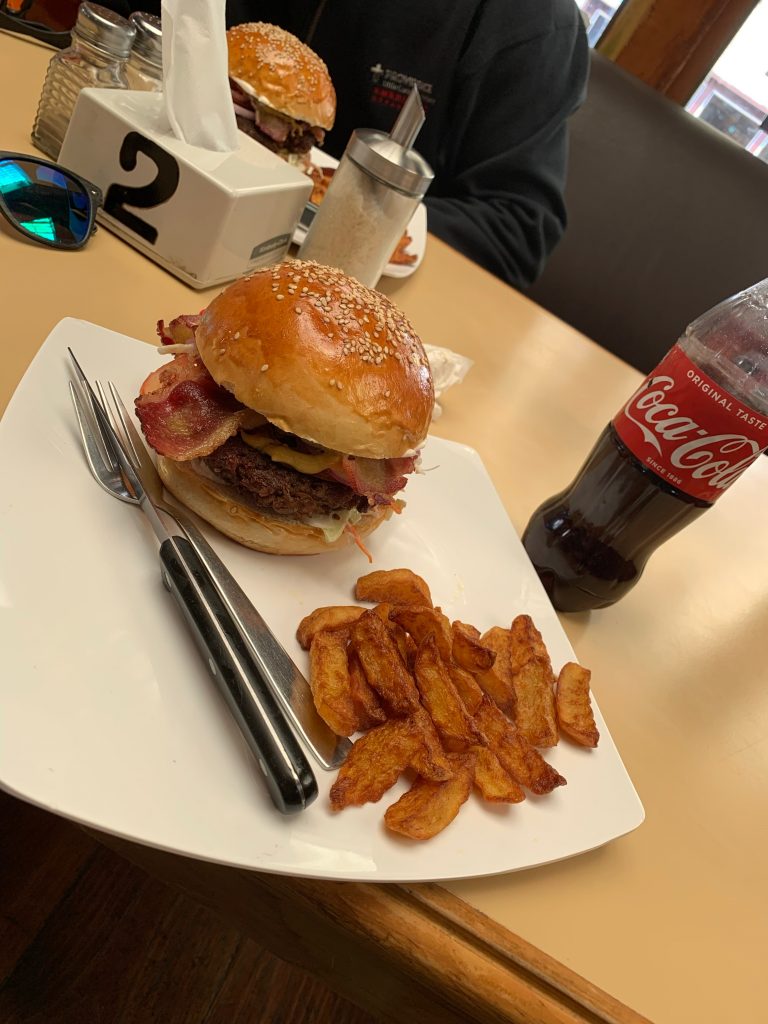
Day 11
Waking up, feeling refreshed. We packed up, and headed for Phakding where we would have lunch. The interesting thing about this portion of the trail was watching the hikers come up so slowly while we were practically dancing our way down the trail. Arriving in Phakding, we sit and eat lunch while talking with the local man who owns the Tea House. We learn from him that a hiker had fallen off the trail the day before and died unfortunately. It reminded us of how dangerous the terrain was that we were in. We finished, said our good-byes and moved on to our final stop, Lukla. Along the way, the weather turned and the rain began to pour. I can only imagine what it would be like at the upper elevations.
In Lukla, we showered, washed clothes and prepared to have a big meal which we invited our guide and our porter to break bread and treat them to a big dinner and tip them for the amazing experience they provided and for keeping us safe.
Day 12, The Disembarkment
Gotta get our stuff packed quickly after breakfast as we have a flight to catch out of Lukla Airport. We Follow Santosh, and The Tea house Lady over to the airport where she takes are passports and tickets for the plane. She walks right up to one of the guards checking in luggage and has some words with him and basically told him what he was to do. The next thing we knew, we were put ahead of the lined and cleared to enter the terminal waiting area (this lady wasn’t joking around whatsoever). We sat and waited for our flight in the little airport with nothing but seats and a bathroom.
Saying Good Bye
We talked with our Porter Kancha, who had gifted us prayer scarfs and wished us the best in life and in our journey. This to me was incredible special to receive this gift from Kancha. We were proud and grateful to have had him accompany us throughout or endeavor. With a bit of emotion, we hugged him and said good-bye.
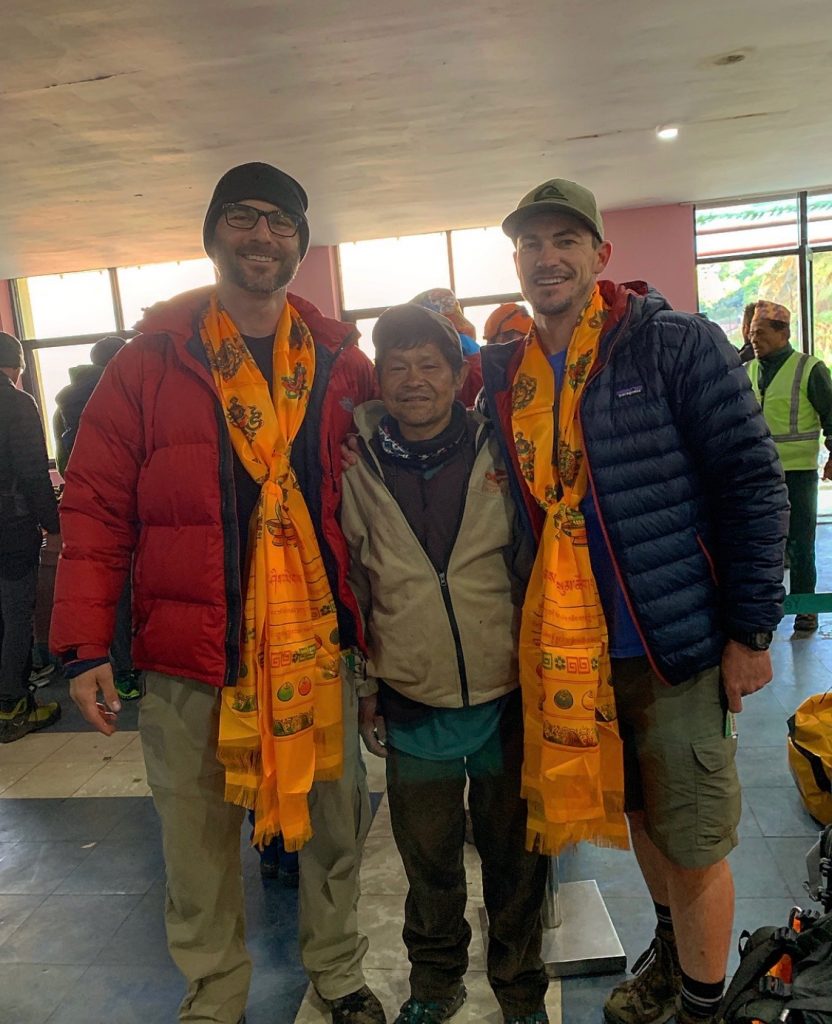
We boarded our plane, taxied into position on the runway, throttled up the engines and after about 10 seconds, we launched. We began picking up speed as we rolled down the inclined runway. And just before the end of the runway we start to lift off. As we pull up, out the window we see the hill disappear and drop straight off into a cliff. Back to the airport where we originally embarked from to then take a 4 hours ride back to Katmandu.
Reflection
The experiences and people I met along the journey will forever be in my heart and have caused me to grow. By far, this was one of the best adventures of my entire life. It takes a level of mental preparedness to embark on something like this, believe it or not. The people and culture of the Himalayas are beautiful. It’s incredible how hard working, happy, and warm the culture is. It makes you feel so grateful for the conveniences we take for granted in everyday life.
With that said, a little tip. I recommend you get yourself a data sim card on the mountain which will help you stay in communication with anyone back home. Come with an open mind and a good attitude. Don’t expect to have luxuries and be ready to rough it for a bit. Do your part to keep this land pristine and beautiful and reduce your impact to it as a tourist. Keep in mind that you are helping put food on the table for the people who are showing you hospitality and keeping you safe.
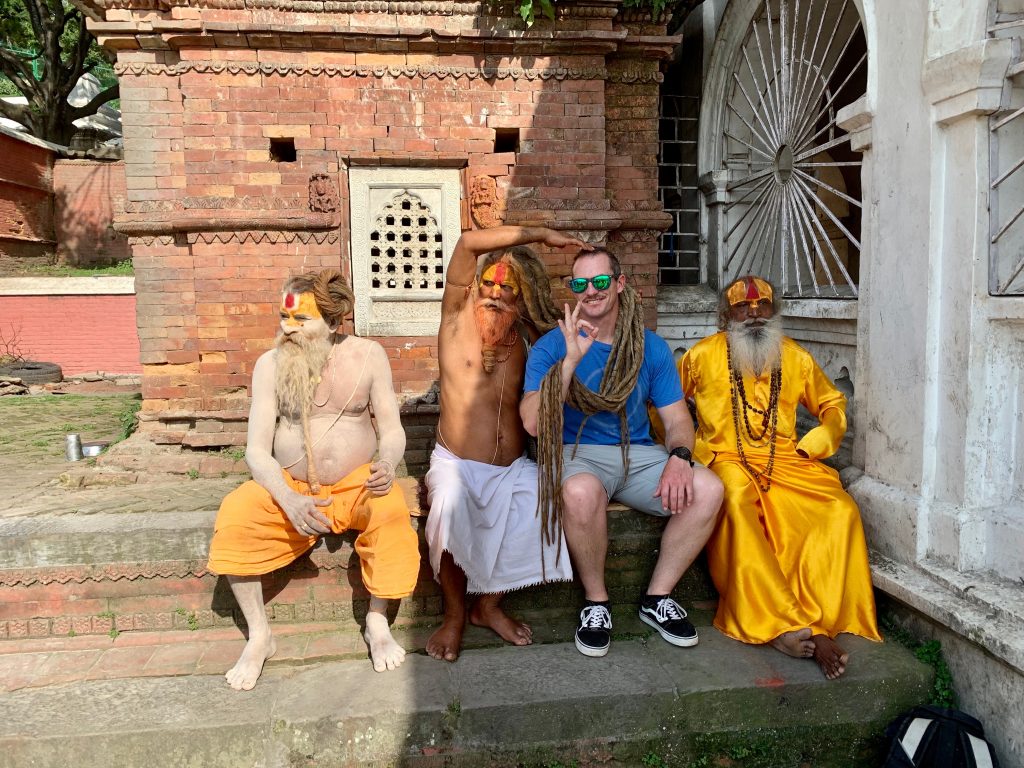
The most important thing to be ready for, is the adventure of a lifetime! Leave that SMOG and ATTITUDE behind and BE EXCELLENT to each other.

